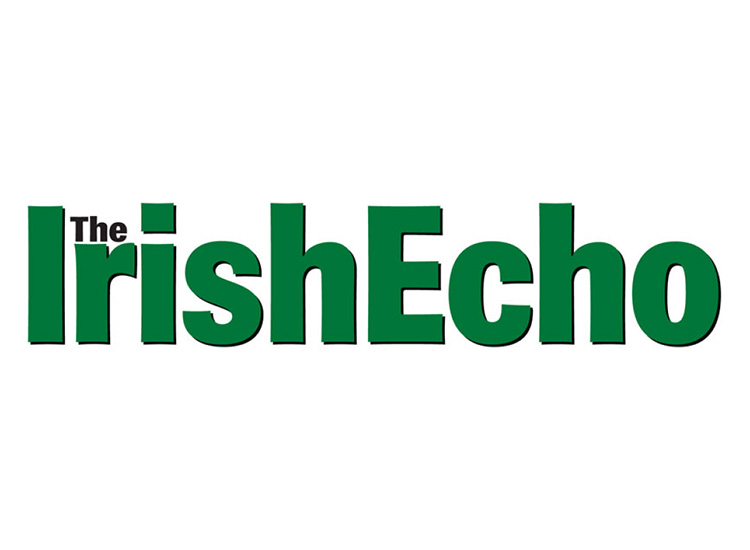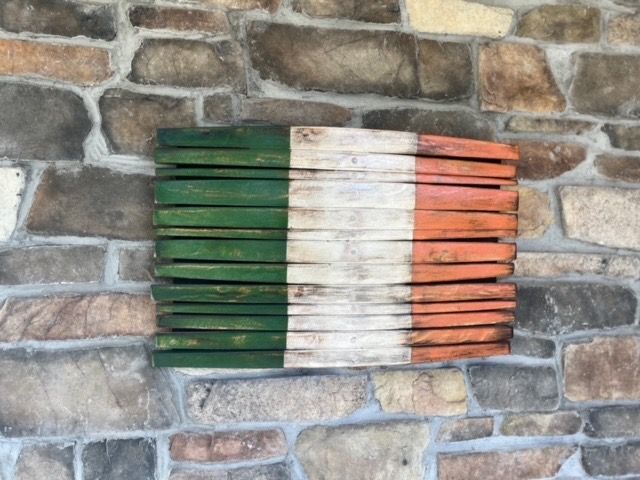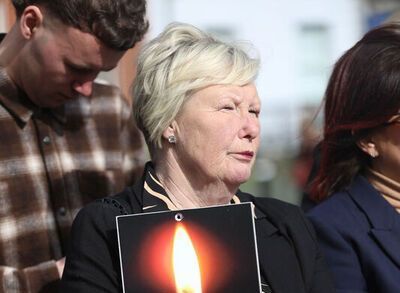Leo Varadkar pictured yesterday outside Government Buildings in Dublin. RollingNews.ie photo.
By Ray O’Hanlon
Boris Johnson’s proposals for Brexit were today going down faster than a Messerschmitt in the Battle of Britain
But the British prime minister might the least surprised at this latest twist in the Brexit battle.
Johnson’s series of proposals - incorrectly described as a “deal” in some British press reports - were widely seen as being dead on arrival even before Johnson spelled them out.
Critics were stating that the proposals would actually mean two borders on the island of Ireland.
Nevertheless, Tánaiste and Minister for Foreign Affairs and Trade, Simon Coveney, was saying that the proposals were serious enough to be considered a possible “stepping stone” to an eventual deal between the EU and UK.
But as much as the proposals are an offer to the European Union, they also stand as part of a possible Conservative Party election manifesto should Johnson succeed in securing a British general election.
They would be portrayed to British voters as a reasonable proposal to an unreasonable Europe, and a very unreasonable Ireland as part of that Europe.
The Daily Express set the tone today with this headline referring to Taoiseach Leo Varadkar: “Varadkar unveils new plan to hammer final nail into Brexit deal – Ireland gets final say.”
The Daily Telegraph was reporting that Varadkar was of the view that Britain actually wanted to scrap Brexit while following up with the headline: “Boris Johnson puts Ireland under huge pressure to accept his new Brexit deal.”
For his part, Varadkar, on a visit to Sweden, said he did not “fully understand” parts of the British Brexit proposal to the EU.
Mr. Varadkar, according to an Irish Independent report, also said that Prime Minister Boris Johnson’s commitment earlier on Thursday to having no new customs infrastructure on the island of Ireland was a "contradiction" of what was in the UK government papers submitted to the EU’s Brexit negotiators on Wednesday evening.
Varadkar, according to the report, said the UK proposals overall “fall short in a number of aspects” saying that he doesn’t “fully understand” the proposal to have the North and the Republic of Ireland in separate customs unions.
The taoiseach said the consent mechanism - which proposes that the currently defunct Northern Assembly would have a say on the North’s future relationship with the EU - was also problematic as it needed to reflect the view of the majority in the North and not just one party.
Continued the Independent report: “Mr. Varadkar was speaking after a meeting with Sweden’s Prime Minister Stefan Lofven in Stockholm. At a joint press conference, Mr. Lofven said that a deal between the UK and the EU was possible but he would not put a percentage on it.
“Sweden stands in solidarity with Ireland. We all remember the violence during The Troubles very clearly and the Good Friday Agreement must not be put at risk,” Mr. Lofven said.
“Mr. Varadkar also identified five ways that the Brexit border conundrum could be resolved: a united Ireland; Ireland rejoining the UK, the UK staying in the EU, the UK staying in the EU's Customs Union and the Single Market, and the backstop. He said four of those five options, including a united Ireland - but not Ireland rejoining the UK - would be acceptable to the Irish government.”
The Guardian newspaper on Wednesday published an explanatory report on Johnson’s proposals and posed the question as to how it differed from a departure deal worked out by his predecessor Theresa May.
Reported the daily: “The key difference is it replaces the controversial Irish border backstop with a new protocol on Ireland/Northern Ireland grouped around five key points, including a big shift on how food and goods are treated and a legally binding role for the Northern Ireland devolved assembly, the so-called Stormont lock.
It went on to list the five points of the Johnson plan: 1. Commitment to the Belfast/Good Friday agreement (GFA) of 1998. The (British) government says it is clear it will not, under any circumstances, impose a hard border between Northern Ireland and Ireland and its Brexit deal will be compatible with a protocol which “makes a firm commitment to avoiding customs checks, regulatory checks, or related physical infrastructure at the border.”
Verdict: This immediately assuages fears raised 48 hours ago that Johnson’s deal involved a string of customs posts popping up along, or near, the Irish border.
- A continuing commitment to longstanding areas of UK/Ireland collaboration including those provisions in the GFA.
This restates the longstanding commitments provided for in the “common travel area”. This allows British and Irish citizens to enjoy equal social and employment rights in each other’s countries as well as to travel freely, without a passport, within the islands of the UK and Ireland. It also recognizes all the rights of those living in Northern Ireland whether they identify as Irish or British and proposes the related protocol in May’s deal be maintained in any new Brexit deal.
Verdict: Largely the same as May’s deal.
- An all-island regulatory zone for agri-food and manufactured goods
Under the provision the UK concedes that Northern Ireland can be treated as part of an all-island single market with the same rules north and south of the border for farming, food production and manufacturing. This would mean goods made or grown and animals raised in Northern Ireland would not be subject to the stringent mandatory EU checks if exported to the Republic of Ireland. Imports from Ireland to Northern Ireland would be treated the same.
This would kick in at the end of the transition period on 1 January 2021 and obviate the need for cross-border checks for quality of goods and food, as long as the UK exports in question originated in Northern Ireland.
In order to prevent Northern Ireland becoming a back door for counterfeit goods from China, substandard food or animals carrying infectious diseases such as foot-and-mouth, checks would have to be conducted on all goods and foods coming into the region from outside the island of Ireland, including from Great Britain.
These checks would be conducted at border inspection posts in airports or ports, with random checks in factories supplying Northern Ireland.
Verdict: This is a major break with May’s deal and reflects months of secret talks with the Democratic Unionist party, which previously protested that checks in the Irish Sea were a red line as they amounted to a break-up of the UK.
- All-island regulatory zone must be approved by the people of Northern Ireland
It is proposed that the all-island regulatory zone can only be triggered if the Stormont executive and assembly consent to it at the end of the transition period in December 2020. Stormont would be asked on a rolling basis every four years after that whether it consented to these arrangements, creating the possibility of this “backstop” arrangement becoming a permanent solution, subject to consent. If consent is not granted by Stormont, “the arrangements will lapse.”
This has been described by DUP sources as a significant shift in power back to Northern Ireland. “It is opt-in, not opt-out,” it said in reference to the fear that Northern Ireland could be trapped in the backstop forever under May’s deal.
Verdict: This breaks with May’s deal on a multiple of points, such as Northern Ireland-only regulatory alignment and a legally binding Stormont say on this. The offer document does not clarify how that would work or whether one party in Northern Ireland would be able to veto this rolling alignment.
- Northern Ireland will leave the EU customs union along with the rest of the UK.
Johnson says the UK must exit the customs union “whole and entire” to allow it to pursue future trade deals for the entire country.
However, this means customs checks on imports and exports across the Irish border would be necessary. The Johnson plan proposes that there are no controls on or near the border but “on a decentralized basis with paperwork conducted electronically.” Efforts to ensure the technology worked would take place during the transition period.
Physical checks to ensure customs declarations match the freight on the truck would be intelligence-led and take place on traders’ premises “or other points in the supply chain” and not on, or near, the border.
This would require a Norway-Swedish type solution allowing inspectors from the EU or Ireland to enter premises in each other’s jurisdictions or at “designated locations” which could be anywhere on the island.
Declarations for small to medium-sized businesses who make up 80% of the volume of border trade would be “simplified”.
Verdict: This will be one of the most unpalatable parts of the proposal for the EU and the Irish government. While the UK promises the customs checks will not be on the border, in line with the Good Friday agreement, the Irish government has repeatedly said it cannot replace the legally binding text of the withdrawal agreement with a mere pledge.
“What we cannot do, and will not do, is replace a legal guarantee with a promise,” said Leo Varadkar when he met Boris Johnson last month.
In Stockholm, Varadkar said that he discussed the border between Norway and Sweden with the Swedish Prime Minister but said it was “not a solution we want to apply by any means” along the Irish border.
Sweden is an EU member and Norway is not. Norway is a member of the European Economic Area which is an association of the 28 EU members (27 after Brexit) and three non-EU states, Iceland and Lichtenstein in addition to Norway. Membership of the EEA means Norway complies with some EU rules and regulations, though it is not in the EU Customs Union.











